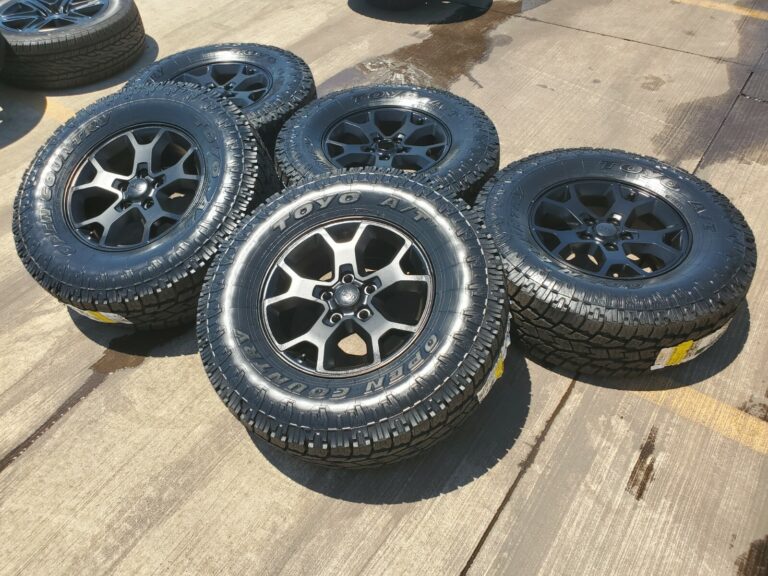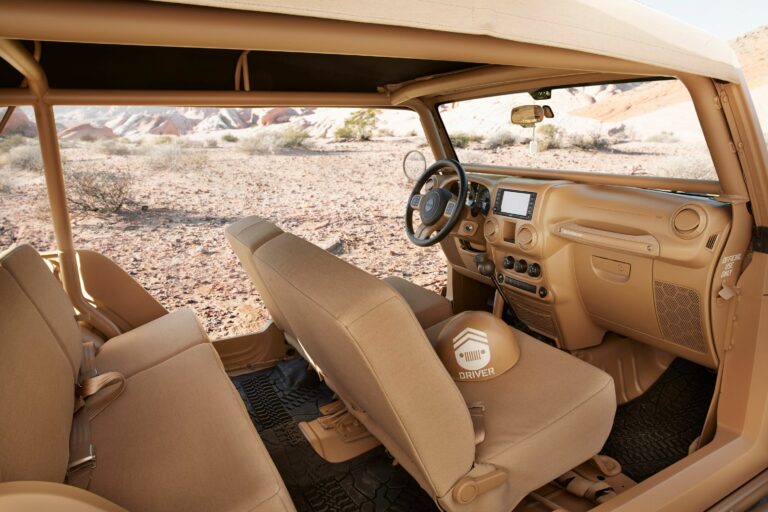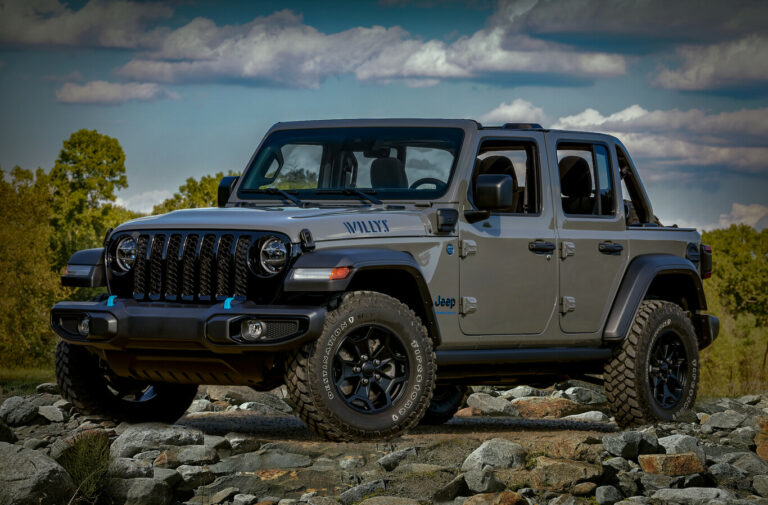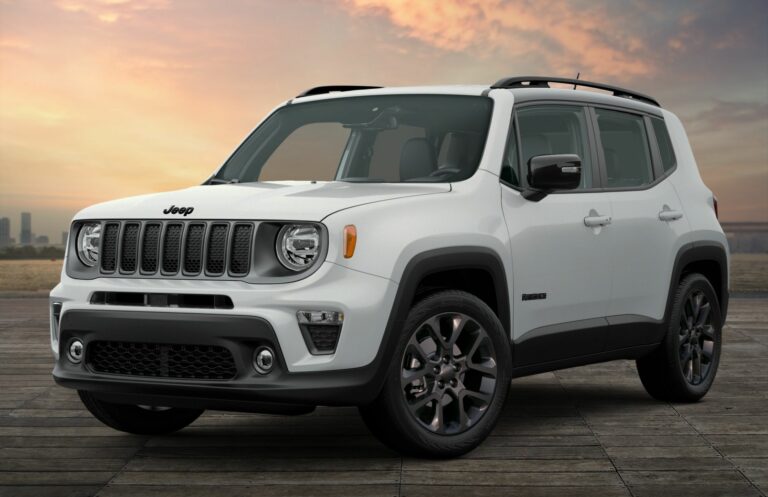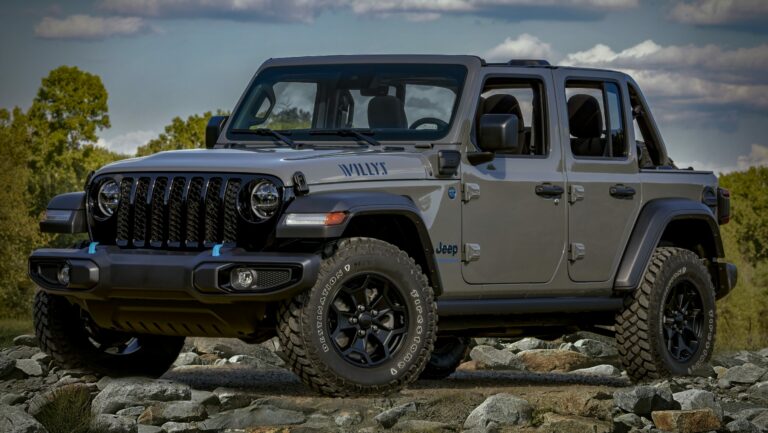Jeep Wrangler 2 Door Vs 4 Door Size: Navigating the Dimensions of an Icon
Jeep Wrangler 2 Door Vs 4 Door Size: Navigating the Dimensions of an Icon jeeps.truckstrend.com
The Jeep Wrangler stands as an enduring symbol of adventure, freedom, and unparalleled off-road capability. For decades, its distinctive silhouette has captured the imaginations of enthusiasts worldwide. However, with the introduction of the 4-door Unlimited model in 2007, prospective owners gained a significant choice: the classic, nimble 2-door or the more spacious, versatile 4-door. This decision isn’t merely about aesthetics; it profoundly impacts everything from daily drivability and passenger comfort to off-road prowess and cargo capacity.
Choosing between the Jeep Wrangler 2-door and 4-door size is one of the most critical decisions a potential buyer will face. It dictates how the vehicle will fit into your lifestyle, your garage, and even how it performs on the most challenging trails. This comprehensive guide will delve deep into the dimensional differences, their practical implications, and help you determine which iconic Wrangler size is the perfect match for your needs.
Jeep Wrangler 2 Door Vs 4 Door Size: Navigating the Dimensions of an Icon
I. A Historical Perspective: The Evolution of Wrangler Sizes
For most of its illustrious history, the Jeep Wrangler (and its predecessors like the CJ) was exclusively a 2-door vehicle. This compact, rugged design was synonymous with its military heritage and go-anywhere spirit. It was the quintessential trail machine, lightweight and agile, capable of squeezing through tight spaces.
However, as the automotive market evolved, so did consumer demands. Many admired the Wrangler’s rugged charm but yearned for more practicality, especially for families or those needing extra cargo space. Recognizing this burgeoning need, Jeep introduced the JK generation in 2007, which notably included the first-ever factory-produced 4-door Wrangler, dubbed the "Unlimited." This marked a paradigm shift, broadening the Wrangler’s appeal from a niche off-road toy to a more mainstream, yet still highly capable, daily driver and family adventure vehicle. The current JL generation continues to offer both the traditional 2-door and the popular 4-door Unlimited configurations, each catering to distinct ownership profiles.
II. Core Dimensions: A Numerical Breakdown
Understanding the precise dimensional differences is the first step in appreciating the distinct characteristics of each Wrangler size. While exact measurements can vary slightly by model year and trim level, the fundamental disparities remain consistent.
-
Wheelbase: This is arguably the most significant differentiator.
- 2-Door Wrangler: Typically features a wheelbase around 96.8 inches (2459 mm).
- 4-Door Wrangler (Unlimited): Stretches out to approximately 118.4 inches (3007 mm).
- Implication: The 4-door’s wheelbase is over 21 inches longer. This extended length directly impacts turning radius, ride comfort, and off-road break-over angle.

-
Overall Length: Directly correlated with the wheelbase.

- 2-Door Wrangler: Measures roughly 166.8 inches (4237 mm).
- 4-Door Wrangler (Unlimited): Extends to about 188.4 inches (4785 mm).
- Implication: The 4-door is approximately 21.6 inches longer overall. This difference is crucial for parking, garage fitment, and maneuverability in tight urban environments.
-
Overall Width and Height: These dimensions are largely similar between the two configurations, as they share the same chassis width and often similar suspension setups.
- Overall Width: Around 73.8 inches (1875 mm) (excluding mirrors).
- Overall Height: Varies slightly with trim and tires, but generally around 73.6 inches (1869 mm) for soft tops, and slightly more for hardtops.
- Implication: While length is the primary differentiator, both Wranglers maintain a similar "footprint" in terms of width and height, meaning they occupy similar lateral space on the road or trail.
-
Turning Radius: A direct consequence of the wheelbase.
- 2-Door Wrangler: Boasts a tighter turning circle, often around 34.5 feet (10.5 meters) curb-to-curb.
- 4-Door Wrangler (Unlimited): Requires a wider turn, typically around 41.4 feet (12.6 meters) curb-to-curb.
- Implication: The 2-door is noticeably more agile in tight parking lots, U-turns, and especially on challenging, winding off-road trails.

III. Interior Space: Passenger and Cargo Considerations
Beyond external dimensions, the interior space is where the 2-door and 4-door Wranglers diverge most dramatically, significantly impacting their practicality for different lifestyles.
-
Passenger Capacity:
- 2-Door Wrangler: Designed to seat four passengers (two front, two rear). Rear-seat access requires folding and tilting the front seats, which can be cumbersome, especially for adults or frequently used child seats. Rear legroom is limited.
- 4-Door Wrangler (Unlimited): Comfortably seats five passengers (two front, three rear). Dedicated rear doors provide easy ingress and egress. Rear legroom is substantially more generous, making it suitable for adult passengers on longer journeys or multiple child seats.
-
Cargo Volume: This is a major advantage for the 4-door.
- 2-Door Wrangler: Offers minimal cargo space behind the rear seats, typically around 12.9 cubic feet (0.36 cubic meters). With the rear seats folded, it expands to approximately 31.7 cubic feet (0.90 cubic meters). This is sufficient for groceries or a few bags, but quickly becomes limiting for gear-intensive hobbies or family trips.
- 4-Door Wrangler (Unlimited): Boasts significantly more cargo room. With all seats up, it provides roughly 31.7 cubic feet (0.90 cubic meters) – the same as the 2-door with its seats folded! When the rear seats are folded down, the volume expands to a cavernous 72.4 cubic feet (2.05 cubic meters). This makes the 4-door highly practical for camping gear, sports equipment, large shopping hauls, or even sleeping inside during an overland adventure.
-
Open-Air Experience: Both models offer the signature removable doors, roof panels, and fold-down windshield. However, the sheer volume of open space in the 4-door can make the "open-air" feeling even more expansive, while the 2-door offers a more intimate connection with the elements.
IV. On-Road Driving Dynamics: Daily Commute and Handling
While the Wrangler is renowned for its off-road prowess, most owners spend a significant amount of time on paved roads. The size difference profoundly influences the on-road driving experience.
-
Maneuverability:
- 2-Door Wrangler: Its shorter wheelbase and tighter turning radius make it exceptionally nimble. It excels in urban environments, navigating tight parking lots, and making U-turns with ease. This agility can make it feel more "fun" and responsive for some drivers.
- 4-Door Wrangler (Unlimited): The longer wheelbase means a wider turning circle, requiring more planning for tight maneuvers. While still manageable, it feels less agile in congested areas compared to its smaller sibling.
-
Ride Comfort and Stability:
- 4-Door Wrangler (Unlimited): Generally offers a smoother, more composed ride, especially at highway speeds. The longer wheelbase helps to absorb bumps and road imperfections more effectively, reducing the "choppy" or "bouncy" sensation sometimes associated with short-wheelbase vehicles. It also feels more stable in crosswinds and during higher-speed cornering.
- 2-Door Wrangler: The shorter wheelbase can lead to a slightly choppier ride, particularly over uneven pavement or expansion joints. While perfectly acceptable for a rugged SUV, it’s a noticeable difference compared to the 4-door. It can also feel a bit more susceptible to body roll and sway on the highway.
-
Fuel Economy: While not a primary selling point for any Wrangler, the fuel economy differences between the two sizes are often negligible. Any variation is more likely due to differences in engine, transmission, tire size, and driving habits than the physical dimensions alone. The added weight of the 4-door is offset by its slightly more stable highway manners.
V. Off-Road Prowess: Where Size Really Matters
The heart of the Wrangler lies in its off-road capability, and here, the size difference presents a nuanced trade-off. Neither is definitively "better," but each excels in different types of terrain.
-
Break-over Angle: This is the maximum angle a vehicle can traverse without its undercarriage touching the ground between the axles.
- 2-Door Wrangler: Due to its shorter wheelbase, the 2-door generally boasts a superior break-over angle. This makes it exceptional for cresting steep obstacles, navigating over large rocks, or traversing sharp peaks without "high-centering."
- 4-Door Wrangler (Unlimited): The longer wheelbase means a less favorable break-over angle. It’s more prone to scraping its belly on the same obstacles that the 2-door might clear effortlessly. This can be mitigated with lift kits and larger tires, but the fundamental geometry remains.
-
Turning Radius (Off-Road):
- 2-Door Wrangler: Its tight turning circle is a massive advantage on narrow, winding trails, through dense forests, or during complex rock crawling maneuvers where precise positioning is critical. It can navigate switchbacks and tight turns with fewer, or no, multi-point turns.
- 4-Door Wrangler (Unlimited): The wider turning radius can be a hindrance on very technical, tight trails, often requiring more elaborate multi-point turns to clear obstacles or navigate sharp corners.
-
Stability:
- 4-Door Wrangler (Unlimited): The longer wheelbase provides increased stability, particularly on steep ascents and descents, as well as on off-camber terrain. This extended footprint can inspire more confidence when tackling challenging inclines or high-speed desert runs where stability is key.
- 2-Door Wrangler: While still incredibly stable, its shorter wheelbase can feel a bit more "tippy" on extreme off-camber situations or very steep climbs/descents.
-
Payload and Towing Capacity: The 4-door Wrangler typically offers higher payload and towing capacities compared to the 2-door, making it more suitable for hauling heavy gear, pulling small trailers, or carrying multiple passengers and their equipment.
VI. Practical Considerations and Lifestyle Fit
The choice between a 2-door and 4-door Wrangler is ultimately a lifestyle decision.
- Family Needs: If you regularly transport more than one passenger, have children (especially in car seats), or carry pets, the 4-door Unlimited is almost a necessity. The rear doors and increased legroom are invaluable.
- Commuting and City Living: For daily commuting in urban areas with limited parking, the 2-door’s compact size and superior maneuverability make it the more convenient choice.
- Outdoor Hobbies: Consider the gear you carry. For camping, surfing, biking, or extended overlanding trips, the 4-door’s generous cargo space is a significant advantage. The 2-door might require a roof rack or a trailer for substantial gear.
- Garage/Parking: Measure your garage! The 4-door’s extra length can make fitting into standard garages or parallel parking spots more challenging.
- Resale Value: Both Wrangler models tend to hold their value exceptionally well. However, due to higher demand for the more practical 4-door, it sometimes commands a slightly higher resale premium.
VII. Customization and Aftermarket
Both the 2-door and 4-door Wranglers benefit from an unparalleled aftermarket industry, offering countless options for customization. Lift kits, larger tires, bumpers, winches, and armor are readily available for both. While the fundamental dimensional differences remain, the aftermarket can help mitigate some of the inherent trade-offs. For instance, a 4-door can gain significant break-over clearance with a good lift, and a 2-door can be optimized for extreme articulation. The longer wheelbase of the 4-door can sometimes accommodate larger lifts with less dramatic changes to driveline angles, but this is a nuance for advanced builders.
Practical Advice and Actionable Insights
- Test Drive Both: There is no substitute for experiencing each model firsthand. Drive them on your typical commute, try parking them, and if possible, take them on some light trails to feel the differences.
- Assess Your Primary Use: Is it a daily driver, a weekend warrior, a family hauler, or an extreme off-road rig? Your answer will heavily influence the best choice.
- Count Your Passengers: Realistically consider how many people you will transport regularly.
- Evaluate Your Cargo Needs: Do you carry sports equipment, camping gear, or large grocery hauls frequently?
- Measure Your Parking Space: Ensure the longer 4-door will comfortably fit in your garage or driveway.
- Consider Your Off-Road Ambitions: If extreme rock crawling and tight technical trails are your passion, the 2-door’s agility is a clear advantage. If overlanding, desert running, or tackling moderately challenging trails with family/friends is your goal, the 4-door offers stability and space.
- Budget: While comparable trims will generally show the 2-door as slightly less expensive, factor in potential options and aftermarket modifications for your total cost.
Concluding Summary
The choice between the Jeep Wrangler 2-door and 4-door size is a deeply personal one, with no universally "better" option. The classic 2-door maintains its legacy as the ultimate agile off-road machine, ideal for solo adventurers or couples who prioritize maneuverability and extreme trail capability. Its compact size makes it a breeze in urban settings and the darling of technical rock crawlers.
Conversely, the 4-door Unlimited transforms the Wrangler into a highly practical and versatile vehicle, offering superior passenger comfort, massive cargo capacity, and enhanced stability on both pavement and less extreme off-road terrain. It’s the go-to choice for families, overlanders, and those who need their Wrangler to serve as a capable daily driver alongside its adventurous spirit.
Ultimately, both configurations embody the unmistakable spirit of the Jeep Wrangler – a vehicle born for adventure, customization, and open-air freedom. By carefully weighing the dimensional differences and aligning them with your unique lifestyle, you can confidently choose the Wrangler size that will perfectly fuel your adventures for years to come.
Jeep Wrangler 2 Door Vs 4 Door Size: Estimated Price Comparison Table (2024 Model Year)
Please note: Prices are estimated Starting MSRPs for the 2024 model year in the U.S. and can vary significantly based on specific trim level, optional packages, powertrain (e.g., 2.0L Turbo, 3.6L V6, 4xe Hybrid, 392 V8), region, dealership incentives, and market conditions. These figures are intended as a general guide.
| Feature/Trim Level | Jeep Wrangler 2-Door (Starting MSRP) | Jeep Wrangler 4-Door (Unlimited) (Starting MSRP) | Key Differences |
|---|
Jeep Wrangler 2 Door Vs 4 Door Size: Navigating the Dimensions of an Icon
The Jeep Wrangler stands as an enduring symbol of adventure, freedom, and unparalleled off-road capability. For decades, its distinctive silhouette has captured the imaginations of enthusiasts worldwide. However, with the introduction of the 4-door Unlimited model in 2007, prospective owners gained a significant choice: the classic, nimble 2-door or the more spacious, versatile 4-door. This decision isn’t merely about aesthetics; it profoundly impacts everything from daily drivability and passenger comfort to off-road prowess and cargo capacity.
Choosing between the Jeep Wrangler 2-door and 4-door size is one of the most critical decisions a potential buyer will face. It dictates how the vehicle will fit into your lifestyle, your garage, and even how it performs on the most challenging trails. This comprehensive guide will delve deep into the dimensional differences, their practical implications, and help you determine which iconic Wrangler size is the perfect match for your needs.
I. A Historical Perspective: The Evolution of Wrangler Sizes
For most of its illustrious history, the Jeep Wrangler (and its predecessors like the CJ) was exclusively a 2-door vehicle. This compact, rugged design was synonymous with its military heritage and go-anywhere spirit. It was the quintessential trail machine, lightweight and agile, capable of squeezing through tight spaces.
However, as the automotive market evolved, so did consumer demands. Many admired the Wrangler’s rugged charm but yearned for more practicality, especially for families or those needing extra cargo space. Recognizing this burgeoning need, Jeep introduced the JK generation in 2007, which notably included the first-ever factory-produced 4-door Wrangler, dubbed the "Unlimited." This marked a paradigm shift, broadening the Wrangler’s appeal from a niche off-road toy to a more mainstream, yet still highly capable, daily driver and family adventure vehicle. The current JL generation continues to offer both the traditional 2-door and the popular 4-door Unlimited configurations, each catering to distinct ownership profiles.
II. Core Dimensions: A Numerical Breakdown
Understanding the precise dimensional differences is the first step in appreciating the distinct characteristics of each Wrangler size. While exact measurements can vary slightly by model year and trim level, the fundamental disparities remain consistent.
-
Wheelbase: This is arguably the most significant differentiator.
- 2-Door Wrangler: Typically features a wheelbase around 96.8 inches (2459 mm).
- 4-Door Wrangler (Unlimited): Stretches out to approximately 118.4 inches (3007 mm).
- Implication: The 4-door’s wheelbase is over 21 inches longer. This extended length directly impacts turning radius, ride comfort, and off-road break-over angle.
-
Overall Length: Directly correlated with the wheelbase.
- 2-Door Wrangler: Measures roughly 166.8 inches (4237 mm).
- 4-Door Wrangler (Unlimited): Extends to about 188.4 inches (4785 mm).
- Implication: The 4-door is approximately 21.6 inches longer overall. This difference is crucial for parking, garage fitment, and maneuverability in tight urban environments.
-
Overall Width and Height: These dimensions are largely similar between the two configurations, as they share the same chassis width and often similar suspension setups.
- Overall Width: Around 73.8 inches (1875 mm) (excluding mirrors

